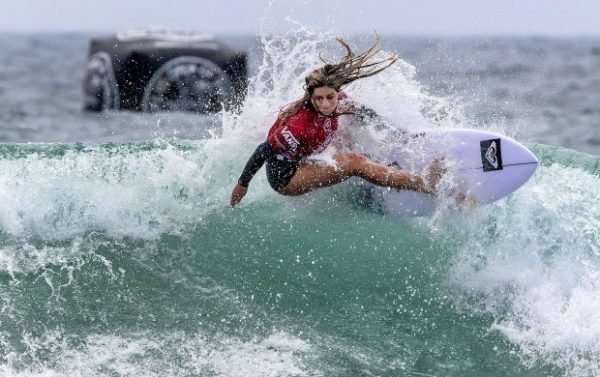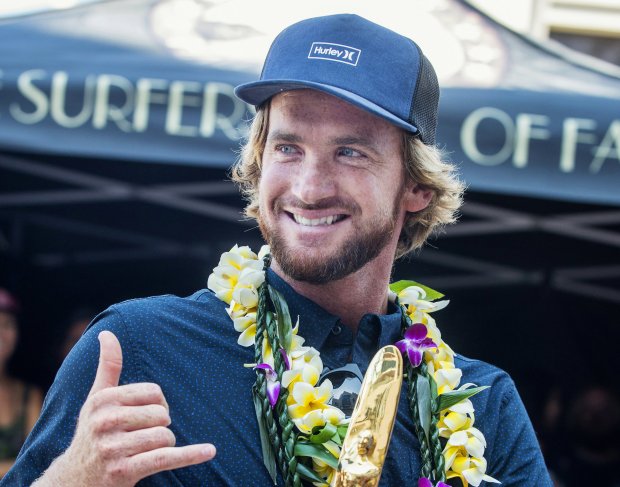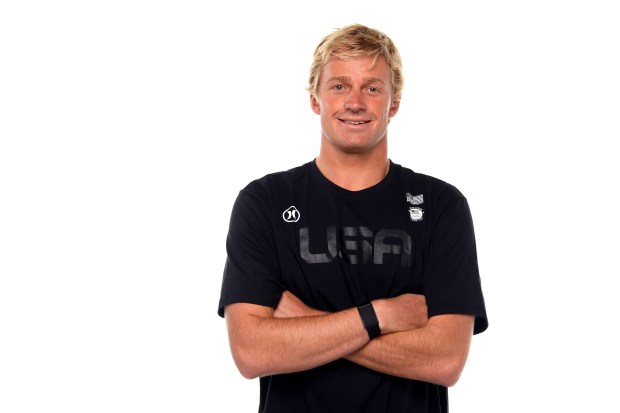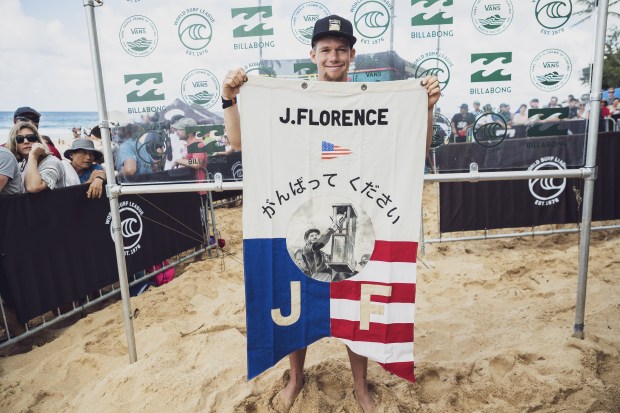The next few months will be a whirlwind for surfers preparing to ride a wave into the 2020 Tokyo Olympics.
National television interviews viewed by millions, a halftime appearance at a Lakers game, training among other Olympic athletes far from the ocean — surfers are exploring uncharted territory, as the sport makes its Olympics debut this summer.
Among those learning lessons along the way, while paving the path for future surf Olympians, are San Clemente surfer Kolohe Andino, representing the United States and Kanoa Igarashi, a Huntington Beach surfer competing for Japan.
Caroline Marks, a Florida surfer who now calls San Clemente home and Carissa Moore, a Hawaiian who grew up competing in Orange County, are set to represent the women’s team for for the U.S.

USA Surfing CEO Greg Cruse talked about the upcoming schedule, challenges athletes will face and restrictions they must consider for the first time as they venture away from the familiar and enter the Olympic arena.
Olympics bootcamp
Andino will be heading to New York on Tuesday, Feb. 25 for a live appearance on “Today,” joined by Cruse, who will be behind the scenes during the show.
“Even at this point, I don’t think they realize how big this is,” Cruse said, noting the millions of viewers for the national television spot. “Just one appearance on the ‘Today’ show is huge.”
The duo will jet back to LAX after the show finishes taping, land at 4:20 p.m. and go straight to a Lakers game for a halftime appearance and autograph signing, joined by Marks and fellow U.S. Olympian John John Florence.
Also next week, team members will participate in a webinar — an “Olympic university” — that will get them thinking about logistics for the Olympics, Cruse said.
The athletes aren’t the only ones who will need to prep for the Olympics, with a USA coach still pending. A decision will be made by April and a few locals are up for the job.
Two-time US Open of Surfing winner Brett Simpson, of Huntington Beach, is a contender, Cruse said. Simpson coaches the USA Surfing junior team.

The teams had to submit a staff-generated list of potential coaches to the U.S. Olympic Committee. The surfers get to vote on who they want to coach them during the Games.
“Everyone enjoys his company, he’s still current as far as his knowledge of surfing,” Cruse said of Simpson. “When we took him to the ISA World Surfing Games, everyone was looking for recommendations from him on where to surf — he was relaxed and pumping them up at the same time.”
Another local on the list of potential coaches is San Clemente’s Mike Parsons, who coaches Andino and Marks — though the other team surfers may feel his guidance would give his disciples unfair advantage.
“That’s why the athletes get to decide,” Cruse said. “He’s definitely in the running.”

New world, new rules
Right now, the pro surfers are huge fish in a small pond.
“I don’t think they realize how small their pond is right now,” Cruse said. “I don’t think anyone understands how big, and how high, their profile will be raised.”
But surf companies they represent will have to get creative if they want to go along for the ride.
There are strict rules about sponsorship logos, a big change for athletes used to splashing stickers on their surfboards, on clothes, hats and anywhere they can fit brand marketing.
Logos on wetsuits, for example, can’t be bigger than about the size of a credit card.
Already, surfers are getting their surfboards set up, with three of the four surfers representing the United States using San Clemente shaper Matt Biolos.
They have to craft their boards carefully. For example, Moore wanted to add an ancient Hawaiian design given to her by a friend, but it would be considered too political. So she opted for a red, white and blue design Biolis’ daughter Ryder, 13, painted for her.
“They are pretty strict, you can only have your country flag, colors, no words,” Cruse said. “It can’t be considered political or controversial.”
With Nike having a deal with the Olympics for uniforms, surfers originally were supposed to be outfitted by Hurley – until a recent sale of the Costa Mesa brand shook things up.
“We have had this deal for two years, are you interested in honoring it?” Cruse said he asked the new owners. “They weren’t.”
Athletes will be wearing Adidas as their uniform sponsor, Ralph Lauren during opening and closing ceremonies, and Nike if they make the medal podium.
Then, there will be the challenge of figuring out the beach stadium layout.
The site of the contest – Tsurigasaki Surfing Beach – will be transformed into a festival, much like the US Open of Surfing in Huntington Beach.
But unlike Surf City, where officials hope to host surfing events when the Olympic Games come to Los Angeles in 2028, there are no hotels lining this stretch of beach for easy access by athletes.
Cruse had to secure the USA team hotel site, about a quarter-mile from the event venue, more than two years ago. He said he just shipped over four donated electric bikes from San Clemente-based manufacturer Murf, that the athletes will use during training in May and during the Olympic competition.
Many other Olympians will have to stay near the Athlete Village, a 90-minute train ride from the surf beach.
Sign up for our Coast Lines newsletter, a weekly digest of news and features on how the residents of the SoCal coast are building ties to their changing environment. Subscribe here.
“The hotels are sold out,” Cruse said, noting even hotels far from the beach are asking $1,000 a night, with a 30-night minimum. “It’s crazy.”
The surfing competition will be held during four days of an eight-day “waiting period” — between July 26 and Aug. 2 — to coincide with the best forecast waves.
In all, 20 men and 20 women will compete at Tokyo 2020.

And what about Slater?
Kelly Slater, the 11-time world champ — and the most recognizable face in the sport of surfing — could be left on the sidelines for this historic moment in the sport’s history.
Slater had a chance to make the team, but was edged out by Florence at the Billabong Pipe Masters two months ago.
So now, Slater, as well as Santa Barbara surfer Lakey Peterson, are the first alternates – meaning if anyone gets injured and can’t compete, they will be the replacements.
Both will be joining USA team surfers at the ISA World Surf Games in El Salvador May 9 through 18 in a three-person team event, a qualifying contest that will determine the final sets of surfers to compete for countries that haven’t already solidified their rosters.
But it’s unclear if Slater and Peterson will get front-row seats to the event in Japan. Some sports allow alternates to travel with the team — including combat sports for which sparring partners are needed. But it’s not yet known if surfing will have the same allowances.
And for everyday fans that were hoping to check out the history-making action live – good luck finding tickets.
“There’s just no availability,” Cruse said, noting he was the 10,700th person in line to get tickets when a batch was released online recently. “By the time I got there, everything was sold out again.”





Recent Comments